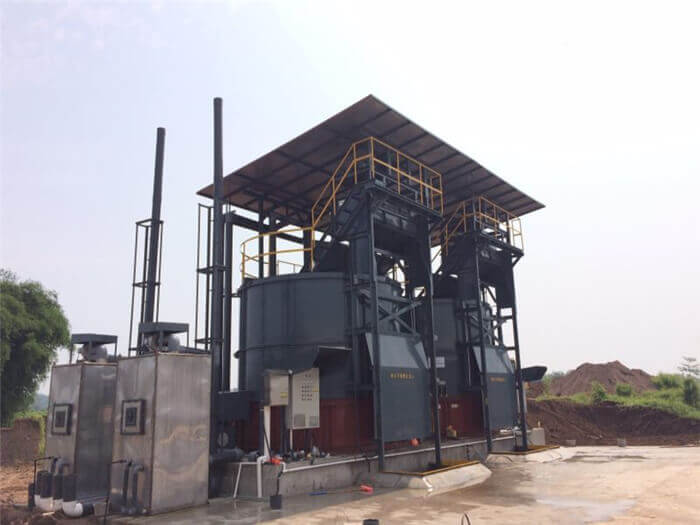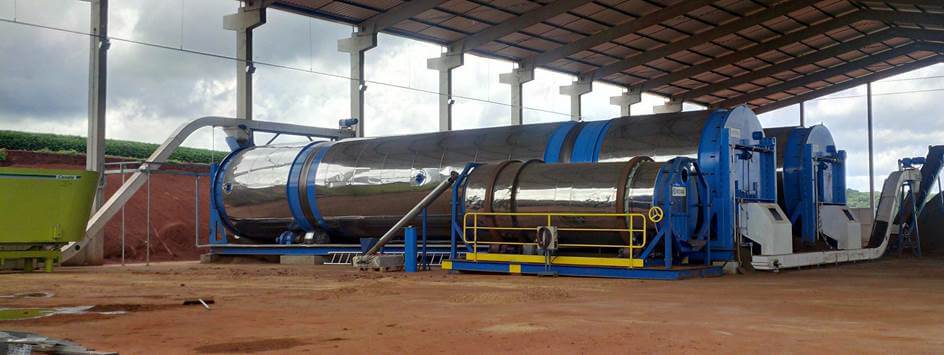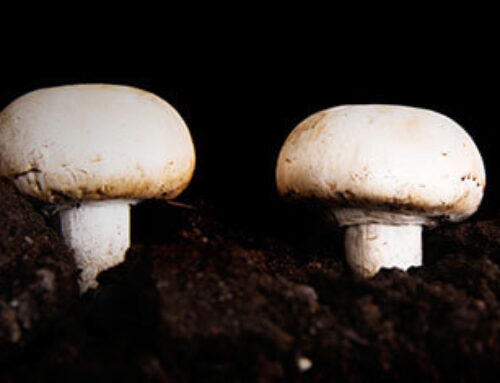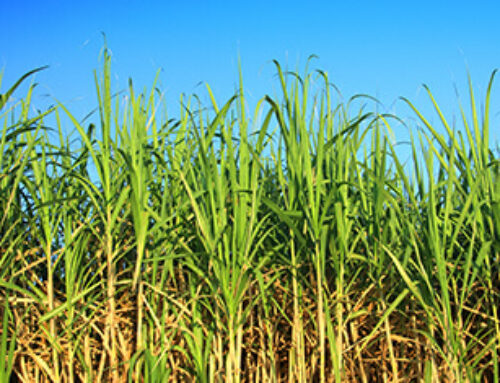
There are 3 techniques that are used to compost on a large scale. These are called “In-Vessel Composting”, “Windrow Composting” and “Aerated Static Pile Composting”. Different composting machines are used in different techniques.
This composting equipment is also called an in-vessel rotating drum, mainly used for food and organic waste composting. The in-vessel composter is only used in in-vessel composting. The composter looks like a rotary drum granulator (a kind of granulating machine used in compound fertilizer plants) from the outside. But they do differ from each other.
The biggest advantage of the in-vessel composter is its smaller occupation when compared with a windrow compost turner.
As we can see, those composters are housed under a single roof. The land requirement for an in-vessel composting system is pretty small compared to other methods of composting which would require a large acreage to compost the same amount of waste. Organics, such as food waste, horse manure, and bedding materials, are treated within this rigid enclosed composter. Temperature, moisture and aeration are closely 
Though small occupation, the in-vessel composting machine is with substantial production. Taking a 10’ x 60’ In-Vessel Composter, for example, will compost manure for bedding from the 1700 cow herd. It has the ability to process compost all year long greatly reducing the amount of organic waste that ends up in landfills.

★ Accelerated compost times. Large-scale in-vessel composters convert huge volumes of solid organic waste into compost in as little as 3 to 7 days.
★ Compost year-round with a continuous flow method
★ Limit odor with enclosed aerobic composting. The decomposition process occurs in the vessel and takes place very quickly.
★ the in-vessel composter can compost organic materials such as food waste, animal waste/manure, and animal mortalities
★ Naturally generated heat – no heater or heating element. The process is natural and typically requires no added heat.
★ Greatly improve working conditions for those managing compost
★ Less manpower is required because the rotating vessel does all the work—one man can operate the entire process.
Windrow compost turner, also called windrow turner, or compost windrow turner is used to mechanically and periodically turn the organic materials which are spread into long, semi-circle-shaped piles to maintain even decomposition. It optimizes aeration and accelerates the composting process. During the working of the compost turner, different compost materials are thoroughly mixed. It is suited for Windrow Composting!
Application of Windrow Turning Machine in Large-scale Composting Facilities:
♦ Food waste composting:
Every year, consumers in industrialized countries waste almost as much food as the entire net food production of sub-Saharan Africa (222 million vs. 230 million tons). It is estimated that over 15 million tonnes of food waste are produced in the UK each year. The best place for inedible food waste is recycling, via in-vessel composting or windrow composting!

It can process a range of organic materials, including:
Kerbside domestic collected organics
Catering waste, including meat and fish
Liquid food waste
Good example:
In 2012 the Laurens County Landfill in Georgia began composting food waste. They have composted at least 650 tons of food waste from local schools and a state prison. After an initial 45 days of the composting process where temperature, CO2, and other parameters are tested, the compost is moved to a storage area where it is allowed to cure.
♦ Animal manure composting
Windrow Turning Machine is widely used in kinds of poultry & livestock manure composting sites. In our previous research, we have posted 2 articles on its functions in Chicken Manure Composting and Pig Manure Windrow Composting! Besides that, windrow turners can also be used in horse manure/cow dung/bedding materials/sheep manure composting, etc. The manure was piled into windrows and turned periodically by using a tow behind windrow turner.
Notice: Manure needs to be managed properly to be composted properly. Carbon/nitrogen ratios should be about 30-to-1, moisture content should be around 50 percent and air needs to be incorporated routinely by turning. This ensures that the pile will heat and convert to compost effectively.
♦ Organic MSW composting
Biodegradable municipal waste (BMW) contains a wide variety of materials that vary substantially in particle size, moisture, chemical and nutrient content. BMW includes food, green waste, paper and cardboard.
In most high-quality compost facilities, water is assumed to be added to the wastes prior to composting to achieve an initial moisture content of approximately 50 percent (wet weight). Wastes are composted in windrows, and compost material is turned using a full hydraulic windrow turner. The turning frequency is three times weekly!
BMW compost is widely used in gardening, horticulture, landscaping and land restoration. Besides that, it also can be used as a soil conditioner in agriculture.





